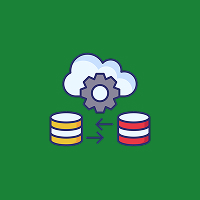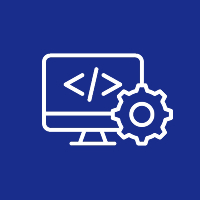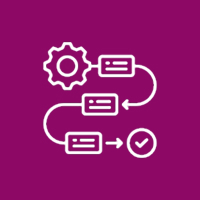Today’s competitive marketplace relies on a multitude of technologies and tools to effectively run organizations – from customer relationship management (CRM) systems, enterprise resource management (ERM) systems, supply chain systems, and cloud-based apps, and other platforms. While these tools help various aspects of the business, they can often operate as individual silos. This type of reliance on siloed systems is avoided by using system integration in combination with your current tech stack, and can accelerate efficiencies and improve business processes.
What Does System Integration Mean?
System integration refers to connecting various IT systems, applications, and software so that they work together as an organized whole within an organization. This creates the opportunity for robust data flow between departments, automation of manual tasks, global consolidated data, generating accurate decisions, and many more benefits. Instead of managing a separate, disconnected system that relies on manually entering information or moving files, an integrated system works closely together like the well-oiled mMachine it is, minimizing duplication, miss-steps and wasted time.
Why Business Efficiency and Integration are Connected
All of these individual processes disconnect data and essentially cause friction within the work and in have team members wasting valuable time. Teams waste hours moving, finding, and reconciling data while doing work that is valuable – when teams are pressured to fit in valuable work while working disconnected from other platforms, errors compound, processes slow down, and collaboration degrades .
System integration addresses all of these challenges by :
- Eliminating data silos.
- Automating manual tasks.
- Empowering employees with real time access to information.
5 Ways System Integration Enhances Business Efficiency
Now let’s look at how system integration increases efficiency in action.
1 Automates Repetitive Processes
When systems are integrated, otherwise manual routine processes are allowed to process automatically. For example:
- A sales order in the CRM, creates an invoice in the accounting system.
- An inventory system allows stock levels to update in real-time after an e-commerce sale.
- Employee data synchronizes across HR and Payroll systems.
- This saves time, reduces human error, and frees employees to do higher-value work.
2. Allows Greater Data Accuracy
When systems are not integrated, it’s common for departments to each have their own copies of the same data — resulting in discrepancies and mistakes. Integrated systems allow everyone to work from the same version of the data, and sign off on one, up-to-date version of the data. And this greater accuracy improves reporting, forecasting, and strategic planning.
For instance, each department — marketing, sales, and customer support — has the same customer data, and their is no duplication or stale information.
3. Enhances Collaboration
System integration makes it easier for teams to collaborate and share information, allowing employees to spend less time searching for files or waiting for updates, and more time solving customer issues.
When employees can see and use the same real-time data, their decisions will be faster, smarter.
4. Speeds Up Processes
Integrated systems help to streamline workflows and allow tasks to flow from department to department without delays.
For example:
- Orders process faster because order information moves automatically from sales order to fulfillment to shipping.
- Support team can resolve customer issues quickly because the representative can easily view order histories and service tickets.
- Finance team can close books faster when they have up-to-date data and augmented views from sales and operations, connected together, from trusted systems.
5. Supports scalability and growth
As businesses grow, they accumulate tools and data. System integration positions businesses to scale faster since new systems can connect to existing systems without disrupting workflows to limit human involvement. This flexibility allows companies to simplify and respond to changing needs and still remain competitive.
Real world perspective
Let’s take a mid-sized retailer for example. This retailer could have its online store, warehouse, shipping, and accounting functions but run on completely separate systems. This forces employees to manually enter orders into each system, generating repetitive tasks that compound with human error resulting in increased latency.
Once this retailer integrated its systems, it allowed all of the order information to flow from website to warehouse to shipping and generate invoices immediately. The retailer shrank their daily manual commerce workloads into hours and found their customers were receiving orders faster; they succeeded — and reduced overhead costs.
How to approach System Integration:
Whether it is simple or complex integration, seamless integration begins with a game plan. Here is how organizations plan to achieve and execute integrations:
1. Get to know your gaps and goals:
Identify where disconnected systems are impeding your progress and what you want to accomplish. For example, you may want faster order processing, increased accuracy, or enhanced customer services.
2. Choose your tools:
Modern integration tools, such as iPaaS (Integration Platform as a Service), make connecting your cloud applications with on-premises systems easy and quick than programming connections from scratch.
3. Leverage Expertise:
Many organizations utilize integration experts to help design, execute, and manage the complexities of integration within their organizations to ensure their continued success.
4. Monitor and Optimize:
Integration is not the proverbial “set it and forget it” exercise. You will want to monitor your results, fix issues quickly, and continue to look for opportunities to accelerate processes as your organization grows.
Future Trends: Smarter Integration on the Horizon
While system integration is nothing new, it is evolving. With more organizations adopting cloud-first strategies, integration will be cloud-first also. Artificial intelligence and machine learning is finding its way into supporting organizations in automating tasks related to data mapping and identifying issues leading to better workflows.
Organizations are also leveraging low-code and no-code integration tools that allow non-technical teams to create their own simple integrations quicker ultimately saving IT and others time and resources.
Final Thoughts
System integration is no longer just an IT upgrade — it’s a key part of building an efficient, competitive business. By connecting systems and automating workflows, organizations reduce costs, boost productivity, and deliver better experiences for employees and customers alike.
In a world where speed, accuracy, and agility matter more than ever, integrated systems give businesses the edge they need to stay ahead.
Contact Us Today













 Database Development
Database Development












































